Shanagolden House
Houses within 10km of this house
Displaying 27 houses.
Houses within 10km of Shanagolden House
Displaying 27 houses.
| House name | Description | |
|---|---|---|
| Cahercon/Cahiracon | A house situated on the bank of the Shannon, the seat of the Scott family until at least the 1850s. The sale rental of 1854 gives a detailed description of the house which included 16 bedrooms. By the mid 19th century James Kelly held the house in fee. The buildings were valued at over £53. The Honourable Charles William White, second surviving son of Baron Annally, was living at Cahiracon in the mid 1870s and it was a seat of that family in 1894. The Vandeleurs lived here for a short time at the beginning of the 20th century. Bought by the Maynooth Mission to China in 1920 and sold by them to the Salesian Sisters of St John Bosco in 1962. The house later became the centre of Cahercon Community College. Cahercon is now owned by Clareman Paddy Whelan of Limestone Quarries. |

|
| Clifton | Built by the Scotts of Cahiracon for the use of their agents circa 1830s, this house was in the possession of James Kelly by the time of Griffith's Valuation when the house was recorded as unoccupied. It became St Brigid's Convent for postulants of the Columban Sisters in the 1920s and was demolished in 1979. |

|
| Erribul | A steward's house built in the 1840s by Colonel George Wyndham and valued at over £12 at the time of Griffith's Valuation. It is labelled Erribul House on the 25-inch Ordnance Survey map of the 1890s and is still extant. | |
| Cahermoyle/Cahirmoyle | The present house was built in the early 1870s by Edward O'Brien, son of William Smith O'Brien replacing an earlier house which was the home of his grandmother the Dowager Lady O'Brien in the early 1850s. The Ordnance Survey Field Name Book states that Cahermoyle was held from Lord Southwell. The house was valued at £81+ in 1906 and sold by the O'Briens in 1919. In 1988 Cahermoyle and 200 acres were offered for sale by the Oblate Fathers who had had a Novitate there since the early 20th century. The house is now a nursing home. |
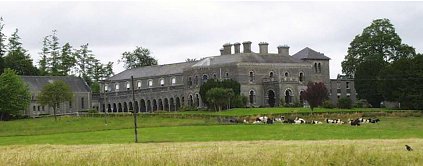
|
| Glenastar Cottage | Occupied by William Osward circa 1840 and described as a large house of 2 storeys. Held by William R. Yeilding in fee at the beginning of the 1850s and valued at £7.5 shillings. The residence of Richard M. Yielding in 1814. |

|
| Fort Anne | The residence of S. E. Johnson in 1837, built by his father William. The house was occupied by Richard Johnston in the early 1850s who held the it from the Reverend R. Dickson, who held the demesne in fee. In 1906 this house valued at £13.15 shillings was occupied by William D. Dickson. The original house is no longer extant. | |
| Ballysteen | Inhabited by James Massey in the early 1850s who held the property from the Earl of Clare. The house was valued at £11+ at that time. Though still extant it has fallen into disuse. |

|
| Movena | A house on the Roche estate occupied by Bridget Farrell in the early 1850s when the buildings were valued at £11. Movena is marked on the first edition Ordnance Survey map. It is now a ruin. |
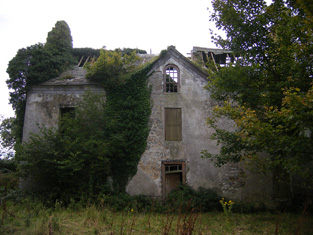
|
| Waterpark House | A house on the Monteagle estate, the residence of Catherine Nolan in the early 1850s, when it was valued at £10. It is labelled as Waterpark House on the 25-inch Ordnance Survey map of the 1890s. A house is still extant at the site. | |
| Corgrig House | Gerald Griffin was the proprietor of Corgrig in 1826, Mrs Griffin occupied Congrieff in 1837 and Gerald Griffin held Corgrig from Lord Monteagle in the early 1850s. The Ordnance Field Name Books state that Peter Griffin was the proprietor circa 1840 and that his father had erected this house about 80 years previously. It is still extant though with modern housing now occupying much of the surrounding area. The 25-inch Ordnance Survey map of the 1890s also shows a house known as Corgrig Lodge in the same townland at R253511. | |
| Rock Lodge | This house was the home of Samuel Harding from at least 1814 to the mid 19th century. He held the property from the Earl of Clare. At the time of Griffith's Valution, it was occupied by Michael Harding and valued at £10. Home of the Behan family at the end of the 20th century. | |
| Glenville | The Massys lived at Glenville from the 1760s. The present house was built by William Massy in 1808. William Massey was resident in 1814, J. Massey in 1837 and William Massy in the early 1850s. William Massy held the house valued at almost £14 from Stephen Creagh. The house came into the possession of the Langford family, relations of the Massys in the early 20th century and they were still resident there in the 1970s. |
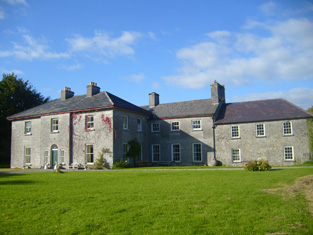
|
| Old Abbey | The home of the Greene family for most of the 18th century. In 1786 Wilson refers to "Abbey" as the seat of Mr. Greene. Subsequent tenants were the Hodges and the Morgans. The Ordnance Field Name Books state that part of the building was very ancient and that a new front had been built in 1805. George Morgan was resident in 1814, William Morgan in 1837 and in the early 1850s, when he held the property from the Earl of Cork. Old Abbey passed to Willliam's daughter, Mrs Wardell, and stayed in the possession of the Wardell family into the 20th century. It is no longer extant. |
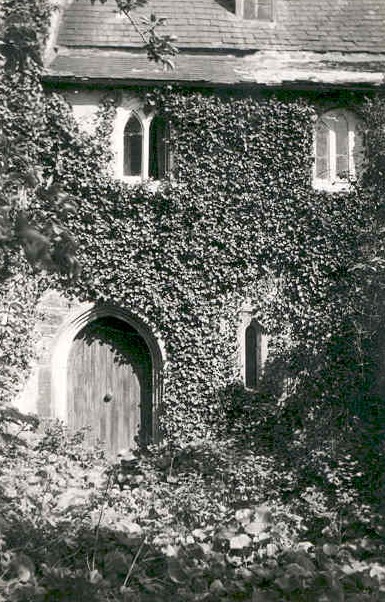
|
| Woodcliff | Occupied by A.E. Taylor in 1837. Woodcliffe, the estate of Anselm Evans Taylor, was advertised for sale in 1852. The sale notice describes Woodcliffe as" beautifully situated, commanding a view of the Shannon". Held by Richard E. Taylor in fee at the time of Griffith's Valuation and advertised for sale again in January 1873 and in July 1884. Sold in 1888 and home of the Fitzgerald family at the end of the 20th century. |

|
| Ouvane Cottage | Lieutenant Hewson, Royal Navy resided at Ouvane in 1837 and Maurice Hewson lived there in the 1850s when the buildings valued at £14 were held from Lord Monteagle. This house is no longer extant. | |
| Mount Trenchard | Lewis described this mansion formerly called Cappa as "beautifully situated on the banks of the Shannon". Marked as "Cappo" on the Taylor and Skinner map of the 1770s. Home of the Rice/Spring Rice family in the 19th century, valued at £40 in the 1850s and at £54 in 1906. Occupied by the Military in 1944, sold to Lady Holland in 1947 and to the Sisters of Mercy in 1953 who opened a school. |
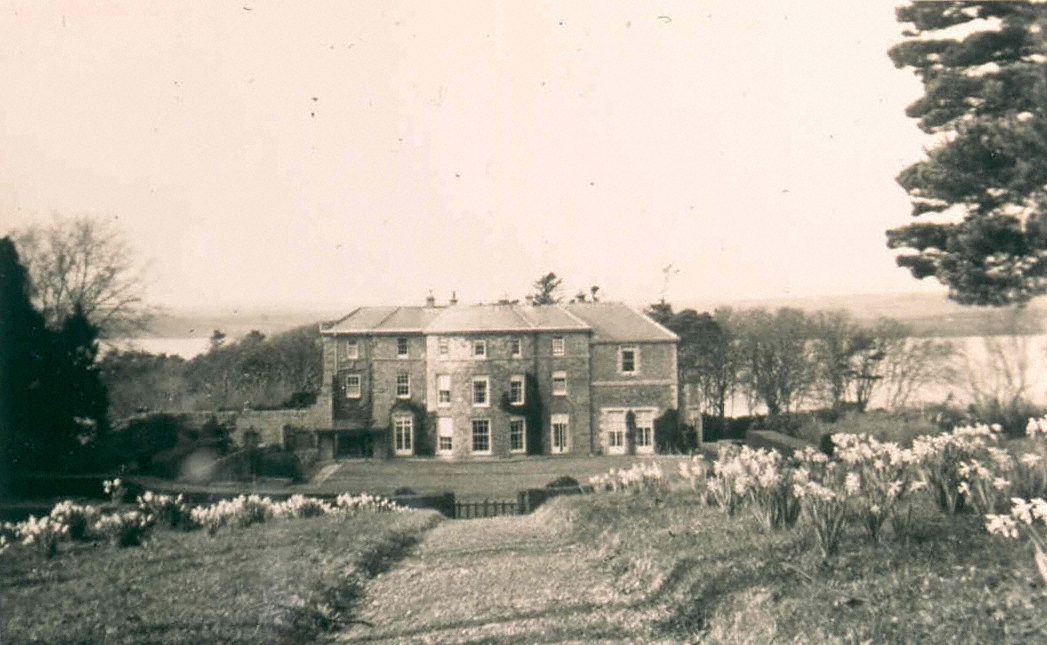
|
| Kilcosgrave | Occupied by Danie Sheahan in 1814. The Ordnance Survey Field Name Book states that Kilcosgrave House was built on the site of the Castle and was formerly the residence of the Langford family. It was then a ruin except for one part which had been converted into a farm house. The name of this house is usually spelt Kilcosgriff. | |
| Riddlestown Park | The seat of a branch of the Blennerhassett family, built circa 1730, it passed by inheritance to the Knight of Glin. In 1786 Wilson wrote that it was was the seat of Mr. Blennerhasset. Described by Lewis in 1837 as ''the ancient mansion of Gerald Blennerhassett'' on the banks of the Deel. It was held in fee by Gerald Blennerhasset at the time of Griffith's Valuation when it was valued at £22. Passed to the Knight of Glin in the early 20th century and then sold. It is still extant. |

|
| Elm Hill | An 18th century house the home of a branch of the Studdert family held from Lord Southwell. Occupied by Ion Studdert in the mid 19th century when the buildings were valued at £27. It was advertised for sale in June 1855 when it contained a "spacious and lofty parlour, drawing room and hall; nine capital bedrooms..". A lithograph of the house is included with the rental. In 1906 this house, valued at £16, was occupied by the representative of Thomas Magner. In the later twenteth century owned by the Woulfe family and now derelict. |
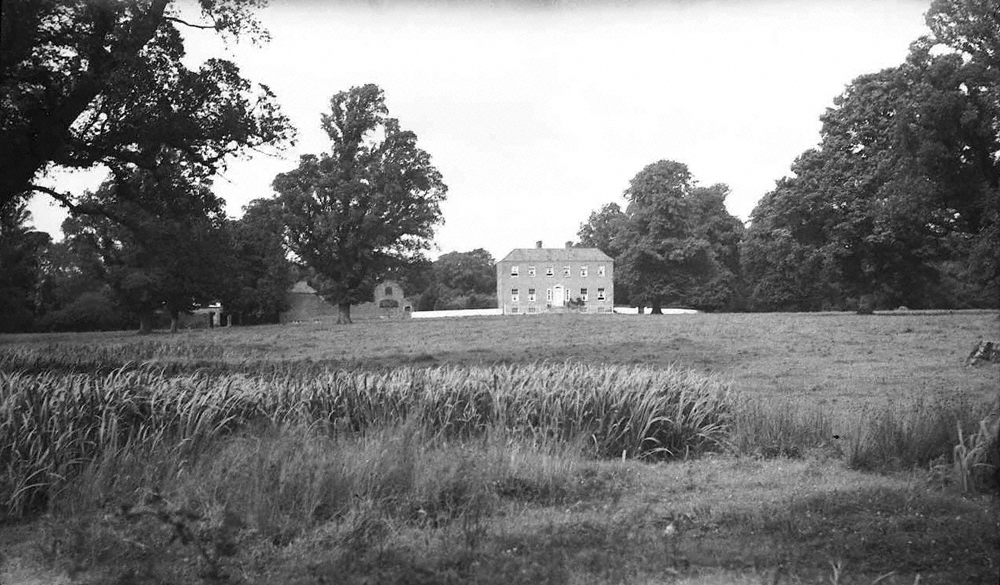
|
| Altavilla | Bence Jones writes that this house was built by the Bateman family in the mid 18th century to the design of Francis Bindon. In 1786 Wlson refers to it as the seat of Jon Bateman. The Ordnance Survey Name Book records that Altaville House was a rectangular building of four storeys built in 1749 by Mr Bateman and that it was then [circa 1840] undergoing repairs by Peter Griffin of Corgrieff. At the time of Griffith's Valuation it was inhabited by Peter Griffin who had carding mills and offices closeby. He held the property from William Dickson. It is still extant. |

|
| Ballycullen House | This house was built in 1740 by Carrol Naish on the foundation of Ballycullen Castle according to the Ordnance Survey Name Book. Occupied by Patrick C. Nash in 1814 and by Carroll Nash at the time of Griffith's Valuation, it was held from Henry Hare and valued at £14. It is still extant and was restored during the twentieth century. | |
| Morgans North | The Rose family were resident here in the early 18th century. Later a residence of the Sandes family of Queen's county, occupied by William Sands at the time of Griffith's Valuation who held the property from Charles L. Sands. The buildings were valued at £15+. This house was also known as Mount Pleasant, Lewis records Mrs Morgan as the resident in 1837. Hone of the O'Dells in the early 20th century and later bought by the Keane family. |
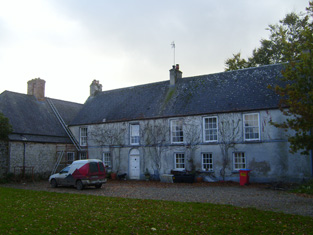
|
| Ballyclogh | A house on the Monteagle estate, leased to John Copley for ever. The house was 3 storeys high and had been repaired in 1810 by Copley. His representatives were subletting the house to Patrick Griffin by the time of Griffith's Valuation when the buildings were valued at £32. This house is now a ruin. |

|
| Glenastar | Glenster was occupied by Samuel Upton in 1814 and by J.U. Upton in 1837. Described at the time of the first Ordnance Survey as a small thatched house of one storey, the residence of John Upton. By the time of Griffith's Valuation the townland of Glenastar was held by the representatives of John Upton. The highest value on any house in the townland was £1.15 shillings and it was held by them in fee. A house is still extant at Glenastar. | |
| Inchirourke More | The residence of Hunt Esq in the 1770s and in 1786. Occupied by Edward Hunt in 1814. At the time of Griffith's Valuation, Robert Hunt held the house, valued at £6.5 shillings, and over 500 acres in the townland of Askeaton from Sir Matthew Blakiston. It is still extant. |

|
| Betty Ville House | This house is marked on the first edition Ordnance Survey map. Located on the Blakiston estate, it was occupied by John Shaughnessy in the mid 19th century and held from the Messrs Young. It was valued at £5. |

|
| Foynes House | In 1837 Lewis describes a house on Foynes Island as a "handsome marine villa, the summer residence of the Earl of Dunraven". The 1st edition Ordnance Survey map shows a house named Foynes House on the southern part of the island. By the time of Griffith's Valuation this is in possession of Peter Griffin, leasing from the Spring-Rice estate and with a valuation of £1 15s. The later 25-inch Ordnance Survey map shows a much smaller property labelled Burneen, close to the site of Foynes House. This latter property is still extant. |

